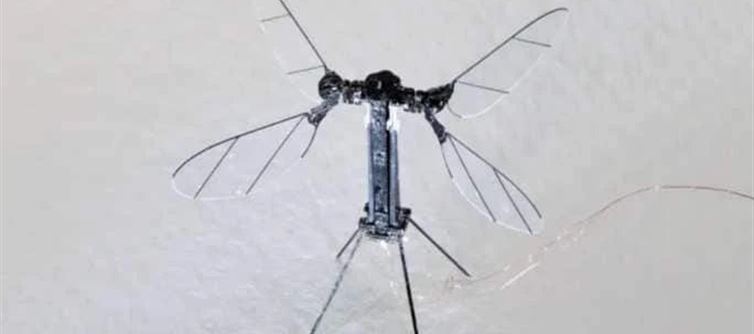
Chinese researchers at the National university of Defence technology in the province of Hunan have revealed a startling advancement in drone miniaturization: a reconnaissance drone the size of a mosquito. This small machine, which was shown on CCTV7 by student researcher Liang Hexiang, is only 1.3 cm long, has delicate wings that resemble leaves, and even has three extremely thin legs.
It can be controlled with a smartphone and remarkably accurately simulates insect flight. This drone has a lot of promise for gathering intelligence despite its small size. It might stealthily move past enemy lines during military operations to collect audio or images without being noticed.
Before sending in humans, first-response teams may use it to investigate fallen structures, look for survivors buried deep within debris, or evaluate dangerous areas. It could be used by environmental experts to monitor water or air quality in isolated or hazardous areas.
An increased emphasis on micro-drones in both the military and civilian sectors is reflected in the design. These little wonders do have some restrictions, though, since their limited payload capacity and short battery life limit how much they can carry or how long they can stay in the air.
However, research is still progressing quickly. These fingertip-sized gadgets might someday contain thermal cameras, chemical sensors, or even covert communication equipment as mini-batteries get better and sensor technology gets smaller.
In the end, this insect drone foreshadows a time when intelligence collection will become much more complex, smaller, and quiet. Instead of a dazzling military display, it alludes to more subtle changes in how countries keep an eye on their surroundings, safeguard their battlefields, and handle emergencies.
It can be controlled with a smartphone and remarkably accurately simulates insect flight. This drone has a lot of promise for gathering intelligence despite its small size. It might stealthily move past enemy lines during military operations to collect audio or images without being noticed.
Before sending in humans, first-response teams may use it to investigate fallen structures, look for survivors buried deep within debris, or evaluate dangerous areas. It could be used by environmental experts to monitor water or air quality in isolated or hazardous areas.
An increased emphasis on micro-drones in both the military and civilian sectors is reflected in the design. These little wonders do have some restrictions, though, since their limited payload capacity and short battery life limit how much they can carry or how long they can stay in the air.
However, research is still progressing quickly. These fingertip-sized gadgets might someday contain thermal cameras, chemical sensors, or even covert communication equipment as mini-batteries get better and sensor technology gets smaller.
In the end, this insect drone foreshadows a time when intelligence collection will become much more complex, smaller, and quiet. Instead of a dazzling military display, it alludes to more subtle changes in how countries keep an eye on their surroundings, safeguard their battlefields, and handle emergencies.




 click and follow Indiaherald WhatsApp channel
click and follow Indiaherald WhatsApp channel